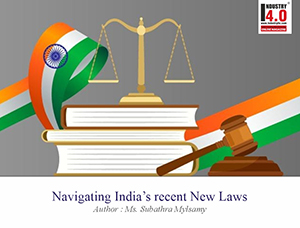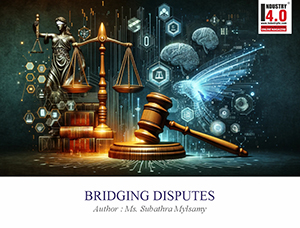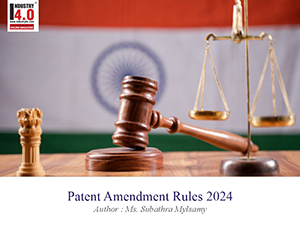Pre-Litigation Mediation : Transforming Dispute Resolution or Adding to legal maze.
India’s legal system is infamous for its slow pace, and with an evergrowing backlog of cases, particularly in commercial litigation, there was a clear need for change. Section 12A of the Commercial Courts Act, 2015, introduced pre-litigation mediation. The concept aimed to resolve disputes before they escalated into formal court proceedings. This step towards modernizing India’s dispute resolution system reflects an attempt to mirror international practices that encourage alternative dispute resolution (ADR) mechanisms. However, while the legislative intent behind pre-litigation mediation is sound, its implementation and the surrounding legal framework have raised several questions.

Understanding Pre-Litigation Mediation: A Legislative Overview
Pre-litigation mediation was introduced with the goal of reducing the overwhelming burden on commercial courts. Section 12A of the Commercial Courts Act, 2015 mandates that for any commercial dispute not involving urgent interim relief, parties must first attempt to resolve their conflict through mediation before filing a suit in court. The failure to comply with this provision can result in the plaint being rejected by the court.
In Patil Automation Private Limited v. Rakheja Engineers Private Limited (2022 SCC Online SC 1028), the Supreme Court firmly upheld the mandatory nature of Section 12A. The judgment emphasized that pre-litigation mediation is not a procedural step that can be ignored; rather, it is a substantive legal requirement, and failure to engage in mediation bars the plaintiff from proceeding to court. The ruling brought clarity but also highlighted the importance of this mediation step in streamlining dispute resolution.
The Court made it clear that pre-litigation mediation must be taken seriously, as it is rooted in public policy aimed at making commercial litigation more efficient. By encouraging parties to settle their disputes outside the courtroom, the law attempts to free up judicial resources and make the legal system more accessible. But despite these legislative strides, the question remains: Is prelitigation mediation achieving what it set out to do?
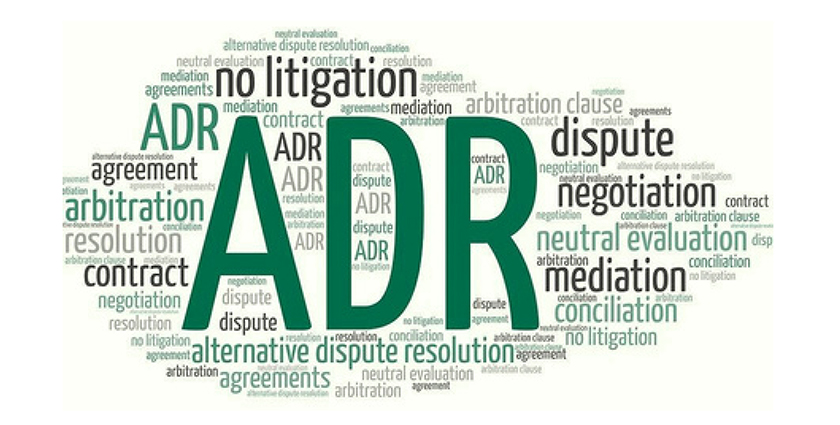
The Mediation Act, 2023: A Reinforced Framework
To bolster the existing mediation framework, the Mediation Act, 2023 was enacted, focusing on promoting and regulating mediation across India. This Act builds on the foundation laid by Section 12A of the Commercial Courts Act by formalizing institutional mediation, establishing the Mediation Council of India, and recognizing the growing need for online mediation.
Key Features of the Mediation Act, 2023:
1. Institutional Mediation: The Act encourages the use of mediation institutions, particularly for complex commercial disputes. These institutions offer trained mediators and structured processes, ensuring that the mediation is conducted in a professional and
regulated environment.
2. Online Mediation: With the advent of digital communication and cross-border commercial transactions, online mediation has become an essential tool. The Mediation Act formally recognizes online mediation, making it easier for parties in different locations to engage in the process without logistical hurdles.
3. Mediated Settlement Agreements: A settlement reached through mediation has the same enforceability as a court decree. This legal backing provides confidence to parties that the mediation process will not result in a weak or unenforceable agreement.
While the Mediation Act, 2023 significantly strengthens the mediation framework, it does not address all the challenges related to prelitigation mediation, particularly the imbalance in how nonparticipation is treated for plaintiffs and defendants.
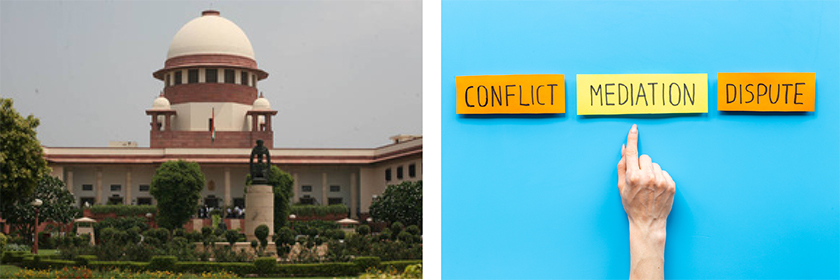
Challenges and Critiques of Pre-Litigation Mediation
Though pre-litigation mediation promises faster, cheaper, and more amicable resolutions, several challenges continue to plague its effectiveness.
1. Imbalance in Non-Participation Penalties: Section 12A places a heavy burden on the plaintiff to initiate mediation. If the plaintiff does not comply, the court is bound to reject the plaint. However, the law does not specify clear consequences for a defendant who fails to engage in the mediation process. This creates an imbalance where plaintiffs are penalized for non-participation, but defendants can refuse to mediate without facing equivalent repercussions.
This issue was noted in C.R.P(MD) No. 1668 of 2024, where Mr. Justice D.Bharatha Chakravarthy discussed the importance of enforcing pre-litigation mediation in commercial suits. He pointed out that while plaintiffs may face rejection of their plaint, courts must ensure that both parties, including defendants, are engaging in good faith.
2. Abuse of Urgent Relief Exemption: Section 12A provides an exemption for cases that require urgent interim relief. This exemption is critical in cases where immediate judicial intervention is necessary to prevent irreparable harm. However, some parties may use the urgent relief provision to bypass the mediation requirement, filing for interim relief even when the urgency is questionable.
Courts have recognized this issue, and as seen in C.R.P(MD) No. 1668 of 2024, Mr. Justice D.Bharatha Chakravarthy emphasized the need for courts to scrutinize claims of urgent relief closely. He stated that courts should examine whether the request for interim relief is genuine or merely a tactic to avoid mediation. This careful judicial review is necessary to prevent the dilution of the mediation mandate.
3. Lack of Good Faith Participation: Mediation can only succeed if both parties are genuinely interested in resolving the dispute. Unfortunately, some parties use mediation as a delay tactic, going through the motions without any real intent to settle. Courts have noted this issue, as seen in Kapil Goel v. Ram Dulare Yadav, where parties engaged in mediation without genuine intent, frustrating the process.
4. Awareness and Accessibility: While the Mediation Act seeks to professionalize the mediation process, many parties—particularly in smaller jurisdictions—lack awareness of how mediation works or its potential benefits. Additionally, the availability of trained mediators is uneven across the country, particularly for specialized commercial disputes. If the infrastructure supporting mediation isn’t robust, the process may feel like a superficial step rather than a meaningful attempt at resolution.
5. Perception of Mediation as Secondary: There is still a perception among some legal practitioners and litigants that mediation is a weaker alternative to litigation. This mindset hampers the effectiveness of the process, as parties may not approach mediation with the seriousness it requires. In commercial disputes where the stakes are high, parties often prefer a court judgment, perceiving it as a more definitive resolution.
The Path Forward: Recommendations for Reform
While pre-litigation mediation has shown promise, it is clear that further reforms are needed to ensure its effectiveness:
1. Equal Accountability for Non-Participation: The law should impose equal obligations on both plaintiffs and defendants to engage in mediation in good faith. Defendants, like plaintiffs, should face penalties if they fail to participate in the mediation process without justifiable reasons. This would prevent defendants from using non-participation as a tactic to delay proceedings.
2. Stricter Guidelines for Urgent Relief: Courts must adopt a more rigorous approach to examining claims for urgent interim relief. By carefully scrutinizing the facts, courts can prevent the misuse of this exemption and ensure that only genuinely urgent cases bypass mediation.
3. Strengthening Mediation Infrastructure: To truly succeed, mediation must be accessible to all parties, regardless of their location. This requires expanding the pool of trained mediators and ensuring that institutional mediation centers are available even in smaller jurisdictions. The Mediation Council of India should take the lead in developing nationwide standards and ensuring that mediators have the necessary expertise to handle complex disputes.

4. Promoting Mediation Awareness: Lawyers and litigants need to understand the benefits of mediation and view it as a powerful tool for resolving disputes, not as a weaker option. Educational initiatives for legal professionals and public awareness campaigns could shift perceptions and encourage more serious engagement with the mediation process.
Conclusion: Realizing the Potential of Pre-Litigation Mediation
Pre-litigation mediation is a step in the right direction for India’s commercial dispute resolution framework. It offers the promise of faster, cheaper, and less adversarial outcomes, freeing up judicial resources and fostering a more business-friendly environment. However, its success hinges on addressing the challenges that have emerged in its implementation.
By ensuring equal participation, scrutinizing urgent relief claims, and strengthening mediation infrastructure, India can transform prelitigation mediation from a procedural requirement into a meaningful tool for dispute resolution. The legislative framework is in place, but its real-world effectiveness will depend on how well it is supported and enforced. If properly implemented, pre-litigation mediation has the potential to significantly alter the landscape of commercial litigation in India, offering a smoother, more efficient path to justice.
About the author :

Ms. Subathra Mylsamy BA.MA.BL.LLM (UK)
Managing Partner
A.K.Mylsamy & Associates LLP

Ms. Subathra is an experienced Partner with a demonstrated history of working in the legal services industry. Ms. Subathra is skilled in International Law, Legal Assistance,Legal
Research, and Legal Writing. Ms. Subathra has done her Master of Laws (LLM) focused in International Business law from The University of Manchester.
Brief Profile of Ms. Subathra Mylsamy :
Ms. Subathra Mylsamy can be contacted at :
About A.K.Mylsamy & Associates LLP :
A.K.Mylsamy & Associates LLP [‘AKM’], is a distinguished Full-Service Corporate Law Firm celebrating its 60th year of practice.
At AKM, we offer a comprehensive range of services encompassing Litigation, Advisory, and Transactional expertise.Evolving our services to meet the needs of our clients, we’ve pioneered in corporate law as a one stop destination covering Commercial, and Civil Law, with a keen focus on Mergers and Acquisitions, Structuring, Recoveries, Insolvency & Bankruptcy, Direct and Indirect Taxes, handled by a seasoned team of former ‘Indian Revenue Service’ officers. Additionally, we excel in Contracts, Intellectual Property Rights to Technology laws, Cyber security , Data Privacy, Energy and Sustainability laws and many more.
A.K.Mylsamy & Associates LLP is a strong foundation of quality, competency, commitment and ethics, which have translated into the firm’s exponential growth and high reputation. Our team of experts, who have enviable experience in their related fields, provides efficient and prompt delivery of legal solutions that works best for your business.
A.K.Mylsamy & Associates LLP set very high standards of professionalism for ourselves and achieve the same with a meticulous, scientific approach and a high degree of professional integrity. We seek long-term relationships with clients and provide the best comprehensive solutions.
Team A.K.Mylsamy & Associates LLP
A.K.Mylsamy & Associates LLP Partners Profile
A.K.Mylsamy & Associates LLP can be contacted at :
LinkedIn | FaceBook | YouTube | Website | Website2
A.K.Mylsamy & Associates LLP News Letters :
” The Lawtree “ is a News Letter brought out in a simple and creative manner bringing out Legal Updates for the public awareness. ” The Lawtree “ has recently Published there 100th Edition.
![]()
“QIkcee” one minute read is an exclusive Intellectual Property Newsletter.
 Disclaimer: The above Article is for educational purposes only. Opinions or points of view expressed in this article represent the view of the author.
Disclaimer: The above Article is for educational purposes only. Opinions or points of view expressed in this article represent the view of the author.
Also read Ms. Subathra Mylsamy’s earlier article :







